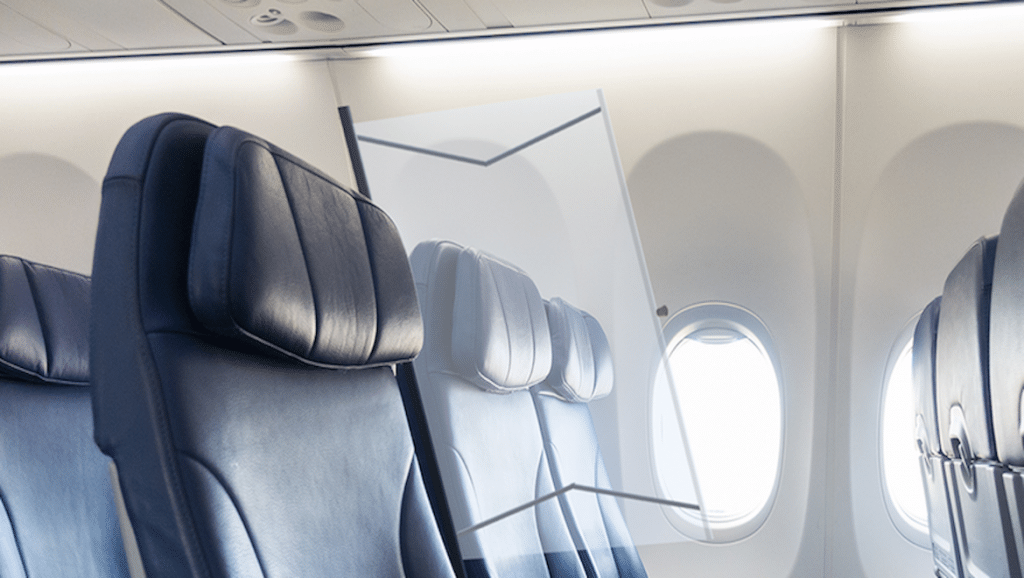
Airline passengers are supportive of implementing physical plastic barriers between seats in the cabin to encourage confidence in flying throughout the pandemic, according to a recent panel at the MRO Asia-Pacific virtual conference.
Surveys suggested that flight-wary passengers would feel more comfortable with the use of plastic barriers between cabin seats, as they do not all necessarily trust industry assurances about the high quality of circulated air within the plane.
Further, it gives passengers additional comfort when facial masks are removed in order to consume food or drinks.
According to Embraer’s Asia-Pacific business development manager Lais Port Antunes, the Brazilian planemaker is already looking into reusable and disposable plastic barriers for use in its regional jets.
“Modern aircraft are already equipped with excellent technology to filter the air,” she said.
“The passengers should feel safe in an aircraft cabin, but they need to see actions.”
Embraer has found there to be a number of challenges in developing the right solution to the issue, however, noting that these barriers must be lightweight, not flammable and do not affect aircraft cleaning and evacuation, said Port Antunes.
Meanwhile, Tan Hean Seng, a senior executive at Singapore Technologies Engineering, said his company had also developed a prototype for these in-flight barriers, and noted it was a more cost-effective solution than removing certain economy seats from sale, such as middle seats.
He added, “Having a shield between the seats, the passengers may feel safer, especially during mealtimes when passengers take off masks and there is potential contamination”.
Panellists at the conference noted other potential solutions to ensure air travel is as safe and hygienic as possible, and to encourage travellers to get back in the skies, such as hands-free lavatories.
The conference also discussed ways in which the industry may permanently change in light of the COVID-19 crisis, including the conversion of passenger jets into freighters, and the addition of more lie-flat business seating on narrow-body planes, now likely to be utilised on longer-haul flights as demand remains subdued.
Boeing vice president of specialty products and services Kate Schaefer said this was already a growing trend that Boeing is aware of.
“There is an awful lot of interest in those premium passengers in having a pod-type solution,” she said.
“There is going to be a lot of interest in pods, doors and staggered seating.”










